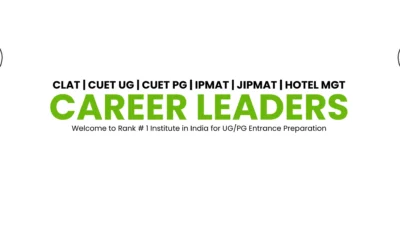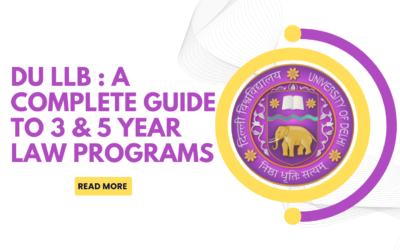The Common Law Admission Test (CLAT) 2025 is fast approaching, opening doors to India’s prestigious National Law Universities (NLUs). This detailed guide provides in-depth information on the CLAT registration process, eligibility criteria, exam pattern, and the much-anticipated exam date.
CLAT Registration: Your First Step on the Legal Journey Commencing typically in July, the CLAT registration process is administered by the Consortium of National Law Universities (NLUs). To register for CLAT 2025, you must visit the official website at consortiumofnlus.ac.in. Here, you can create an account, complete the application form, upload essential documents, and pay the registration fee.
Eligibility Criteria:
Before embarking on your CLAT preparation, it’s vital to ensure you meet the eligibility criteria. For undergraduate (UG) programs, a passing grade in the Class 12 examination or an equivalent qualification from a recognized board or university is required. As for postgraduate (PG) programs, you need a Bachelor’s degree in any discipline from a recognized university. Notably, there is no upper age limit for either UG or PG programs.
For Undergraduate (UG) Programs:
-
Educational Qualification: To be eligible for UG programs, candidates must have passed the Class 12 examination or an equivalent qualification from a recognized board or university.
-
Minimum Marks: There is no specific minimum percentage requirement to appear for CLAT. However, candidates should check the specific NLU they are interested in, as some NLUs may have their own minimum percentage requirements.
- Age Limit: There is no upper age limit for UG programs. Candidates of all age groups can apply for CLAT.

For Postgraduate (PG) Programs:
- Educational Qualification: To be eligible for PG programs, candidates must possess a Bachelor’s degree in any discipline from a recognized university. The degree should be awarded by a university that is recognized by the University Grants Commission (UGC) or any other equivalent institution.
-
Minimum Marks: There is no specific minimum percentage requirement for PG programs in CLAT. However, some NLUs may have their own eligibility criteria, so candidates should verify the specific requirements of the NLUs they wish to apply to.
- Age Limit: Similar to UG programs, there is no upper age limit for PG programs in CLAT.
It’s important for aspiring candidates to carefully review the eligibility criteria provided by the Consortium of National Law Universities (NLUs) and the specific NLUs they are interested in, as there may be slight variations or additional requirements. Meeting these eligibility criteria is a fundamental step in the CLAT application process, ensuring that candidates are eligible to participate in the examination and compete for admission to the prestigious National Law Universities.
CLAT Exam Pattern 2025
The Common Law Admission Test (CLAT) is a standardized test for admission to various undergraduate and postgraduate law programs in National Law Universities (NLUs) across India. The CLAT exam pattern typically consists of the following components:
Type of Examination: CLAT is conducted as an offline, pen-and-paper test. Candidates are required to mark their responses on the OMR answer sheet provided.
Duration of the Exam: The CLAT exam is usually held for a duration of 2 hours.
Total Marks: The total marks for the CLAT exam can vary from year to year, but it generally comprises 150-200 marks, depending on the specific year’s paper.
Sections and Subject Areas: The CLAT exam comprises five sections or subject areas, each testing different skills and knowledge:
-
English Language: This section evaluates a candidate’s proficiency in English, including comprehension, vocabulary, grammar, and language usage.
- Legal Aptitude: Here, candidates’ understanding of legal principles, reasoning, and their ability to apply legal concepts to various situations are assessed.
- Logical Reasoning: This section tests a candidate’s logical reasoning, critical thinking, and problem-solving abilities.
- Quantitative Aptitude (Mathematics): Mathematical skills, including numerical reasoning, data interpretation, and problem-solving, are examined in this section.
- General Knowledge and Current Affairs: Candidates’ knowledge of current events, national and international affairs, history, geography, and science is assessed in this section.
Marking Scheme: CLAT generally follows a marking scheme where each correct answer is awarded a certain number of marks, and there is a penalty for incorrect answers (negative marking). The specific marking scheme may vary from year to year.
Medium of Examination: The CLAT question paper is provided in English.
Use of Basic Stationery: Candidates are required to bring their own black/blue ballpoint pen for marking answers on the OMR sheet.
CLAT Exam Date 2025
The CLAT exam is typically conducted in May or June. The official CLAT 2025 exam date will be announced along with the notification release in July. Stay tuned to the official website for updates on the exam date.
Preparation Strategies: Achieving Success To excel in the CLAT exam, a strategic and focused preparation plan is essential. Here are some key tips:
Start early and plan your preparation effectively.
Familiarize yourself with the CLAT exam pattern and syllabus.
Practice with mock tests and previous year question papers.
Strengthen your weak areas and work on your time management skills.
Seek guidance from experienced mentors or coaching institute
If you have any further questions or need additional guidance, please feel free to reach out our website [careerleaders.in]




































































































































































































































































































































































0 Comments